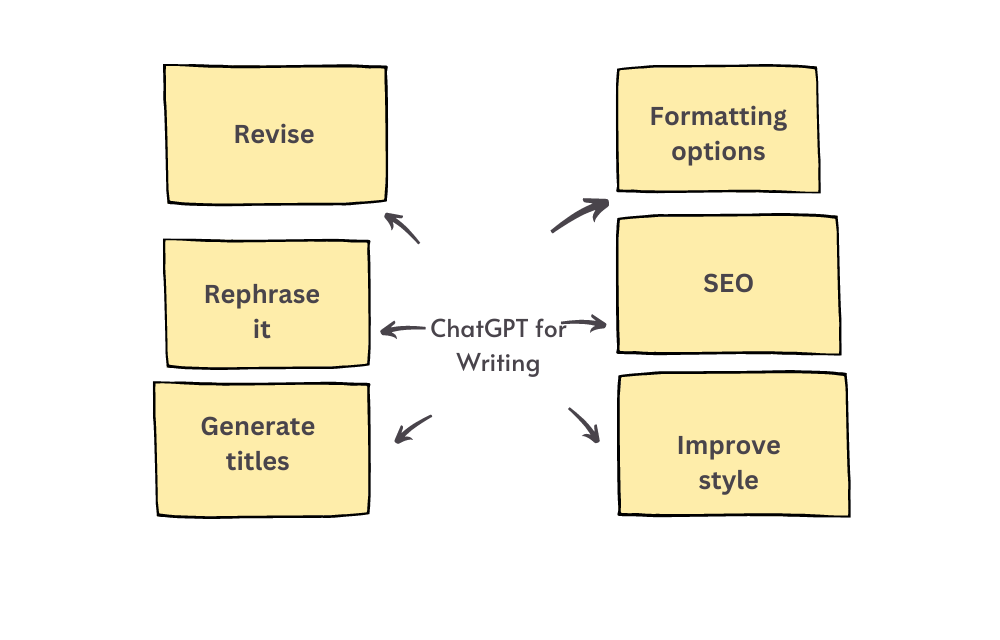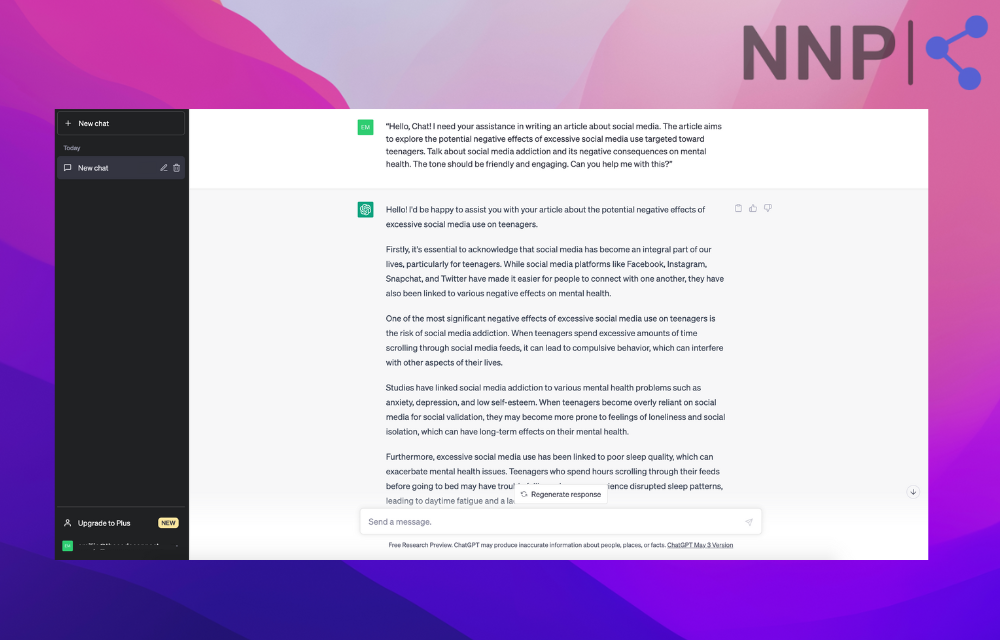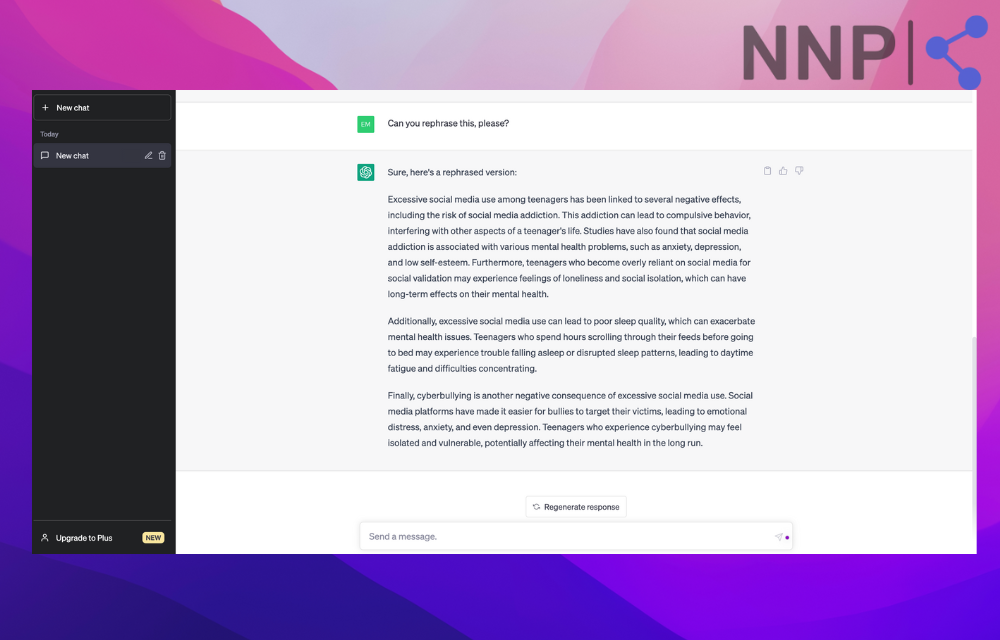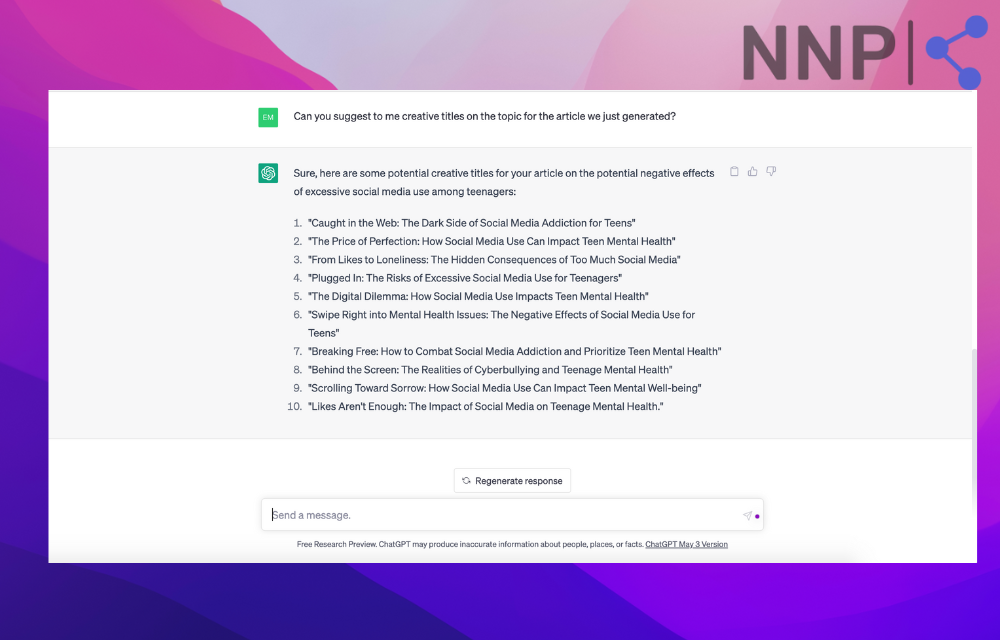ChatGPT Prompts for Writing: Elevate Your Writing to the Next Level
Many people find writing to be a difficult task.
It requires objectivity, thoughtfulness, engagement, and value, which can be challenging without the necessary expertise and writing skills.
However, AI tools like ChatGPT can significantly improve our writing and help us achieve our writing goals.
But, there is a catch: you must provide the right writing prompts to guide the AI language model to produce the desired results.
So, if you are still looking for the right prompts, this blog post offers a list of prompts that will help you boost your writing.
It will also explain how to prepare for writing with ChatGPT, so you can use it independently and achieve optimal results.
A list of ChatGPT prompts for writing
The following prompts can help you apply different styles to your article, create titles, identify content gaps, and optimize your article for search engines.
|
|
|
|
|
|
|
|
|
|
If you want to improve your skills in creating writing prompts for ChatGPT, keep reading. We will provide detailed step-by-step information on utilizing ChatGPT effectively and using the right prompts every time.
How to get the most out of writing with ChatGPT
Chatting with ChatGPT is straightforward. Simply give prompts and receive results within seconds.
However, you must take some preparatory steps to achieve excellent writing results.
Set goals and create a plan.

To ease the writing process, setting goals and creating a clear plan before using prompts with ChatGPT is important.
Doing so lets you select the most relevant prompts to yield the best results.
Next, you must identify the writing style to ensure your article is easily understandable to its target audience.
Setting up a plan like this will help you stay organized and on track, allowing you to follow a logical path toward your desired outcome.
Identify the purpose for which you intend to use ChatGPT
ChatGPT is a versatile artificial intelligence tool that can help you write complete articles or enhance the quality of your written papers.
That's why it is important to determine the specific purpose for which you want to use ChatGPT. This will help ChatGPT create unique and precise content that aligns with your audience, tone of voice, and article goals.
For instance, if you have already written an article and want to make it more cohesive, you can request assistance from ChatGPT by simply asking.
Alternatively, if you need a new article, follow the steps we previously discussed to create effective prompts that are clear and logical, resulting in accurate and honest responses.
Start writing a blog post with ChatGPT (or any other type of written content)
Now that you have familiarized yourself with preparing to write with ChatGPT and have a list of prompts, It's time to learn how to create a unique and valuable article tailored to your audience's needs.
Give a well-crafted prompt.
To get the best results from ChatGPT, it's important to tailor your prompt to your audience's needs.
For example, if you're writing an article about social media, simply asking for "an article about social media" may result in vague and unhelpful responses.
Instead, be specific about what you want to achieve in your article to receive more genuine and relevant results.
Start by saying: "Hello, Chat! I need your assistance in writing an article about social media. The article aims to explore the potential negative effects of excessive social media use targeted toward teenagers. Talk about social media addiction and its negative consequences on mental health. The tone should be friendly and engaging. Can you help me with this?"

Please remember that there are several ways to provide prompts to ChatGPT. However, as a general rule, the more detailed your prompt is, the better results you will receive.
In addition, you can use ChatGPT to generate an outline for the same topic and ask it to write an article based on the outline.
The good thing is that you can experiment with it and use it in many different ways.
✨ Check out how to use ChatGPT to help with your research, along with a list of efficient prompts to get the most out of this powerful AI tool.
Rephrase it
The output you receive from ChatGPT depends on the prompt you provide.
However, sometimes even a well-crafted prompt may fail to deliver the expected results.
To address this, you can manually rephrase and personalize the text or ask ChatGPT to do it.

Generate titles
After generating an article, ask ChatGPT to provide you with a title.
Again, depending on your needs, you can ask ChatGPT to provide you with creative titles by writing: Can you suggest creative titles on the topic for the article we just generated?
Alternatively, you can use adjectives such as academic or engaging to achieve a specific result tailored to your needs.

Formatting options
ChatGPT lets you easily apply bullet points, tables, and other formatting options to your article.
However, it's important to remember the importance of a well-structured article for effectively conveying your message.
Additionally, creating easily skimmable content is crucial for the web and other types of writing, as it helps readers follow along and digest the information more easily.
Fact-check it yourself
Finally, it is important to fact-check the article to ensure accuracy.
ChatGPT has been known to produce false information, so you must verify the truthfulness of the facts.
This will guarantee that your articles are current and do not spread misinformation.
Also Read: How to use ChatGPT for Better Workflow
Bonus: Identify content gaps and ask ChatGPT to revise
One useful way to utilize ChatGPT is to ask it to identify gaps in your content and help make your article more cohesive.
Furthermore, you can request the AI model to revise your written articles and provide feedback that can be followed to improve your article significantly.
✅ Make sure to read How ChatGPT can help you with SEO and learn the best SEO prompts to receive amazing results.
Summary
Writing can be daunting for many people, but AI tools like ChatGPT can help improve our writing skills and achieve our goals.
However, to get the most out of ChatGPT, it is important to provide the right writing prompts that are clear and specific to your audience's needs.
Additionally, by setting goals, creating a plan, and identifying the purpose for which you intend to use ChatGPT, you can ensure that your prompts are effective and give accurate results.

